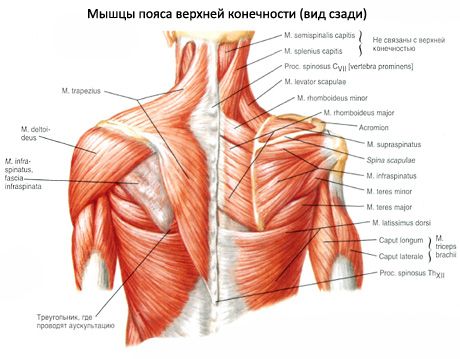Medical expert of the article
New publications
The small and large circular muscles
Last reviewed: 07.07.2025

All iLive content is medically reviewed or fact checked to ensure as much factual accuracy as possible.
We have strict sourcing guidelines and only link to reputable media sites, academic research institutions and, whenever possible, medically peer reviewed studies. Note that the numbers in parentheses ([1], [2], etc.) are clickable links to these studies.
If you feel that any of our content is inaccurate, out-of-date, or otherwise questionable, please select it and press Ctrl + Enter.
The small teres muscle (m.terpes minor) originates on the lateral edge of the scapula and the infraspinatus fascia; it is attached to the lower surface of the greater tubercle of the humerus. It is directly adjacent below to the infraspinatus muscle, and is covered from behind by the scapular part of the deltoid muscle.
Function of the teres minor muscle: being a synergist of the subscapularis muscle and the scapular part of the deltoid muscle, it rotates the shoulder outward (supination); at the same time, it pulls the capsule of the shoulder joint.
Innervation of the teres minor muscle: axillary nerve (CV).
Blood supply of the teres minor muscle: artery surrounding the scapula.

The large teres muscle (m.terpes major) originates from the lower part of the lateral border and lower angle of the scapula, on the infraspinatus fascia.
The muscle bundles are directed medially and upward along the lateral edge of the scapula, crossing the humerus on the medial side below the level of its surgical neck. They are attached by a wide flat tendon to the crest of the lesser tubercle of the humerus, distal and somewhat posterior to the attachment of the tendon of the latissimus dorsi.
Function of the teres major muscle: when the scapula is fixed, it extends the shoulder at the shoulder joint, simultaneously rotating it inward (pronation); it brings the raised arm to the body. When the arm is fixed, it pulls the lower angle of the scapula outward and shifts it forward.
Innervation of the teres major muscle: subscapular nerve (CV- CVIII).
Blood supply of the teres major muscle: subscapular artery.
Where does it hurt?
How to examine?


 [
[